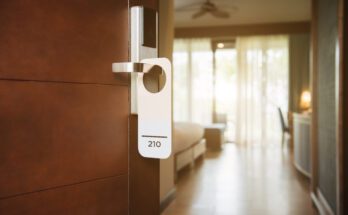Healthy and Productive, the Seager Brothers Finally Cross Paths
Bad timing accounts for the fact that the brothers had never played a regular season game against each other until this week. Their respective teams played an interleague series in Los Angeles in April 2015, but Corey, the Dodgers’ first-round pick three years earlier, had just begun his second stint at Double-A Tulsa. When the Dodgers visited Safeco Field in August 2018, he was on the injured list, having not only undergone Tommy John surgery on May 4 of that year but also arthroscopic surgery on his left hip labrum on August 7.
As you can see, an inning later, Kyle countered with a 405-foot solo homer off Ross Stripling, the second of three that the Dodgers righty would serve up in that frame as the Mariners overcome a 6-2 lead. Even so, the Dodgers came back to win the wild slugfest, 11-9.
Via Retrosheet, the Seager siblings became the first to homer as opponents in the same game since brothers Felipe and Cesar Crespo did so on June 7, 2001. Here’s the list, compiled by the late David Vincent, “The Sultan of Swat Stats:”
| Player | Team | Player | Team | Date |
|---|---|---|---|---|
| Rick Ferrell | Red Sox | Wes Ferrell | Indians | 7/19/1933* |
| Al Cuccinello | Giants | Tony Cuccinello | Dodgers | 7/5/1935 |
| Joe DiMaggio | Yankees | Dom DiMaggio | Red Sox | 6/30/1950 |
| Clete Boyer | Yankees | Ken Boyer | Cardinals | 10/15/1964** |
| Graig Nettles | Indians | Jim Nettles | Twins | 6/11/1972 |
| Graig Nettles | Yankees | Jim Nettles | Tigers | 9/14/1974 |
| Hector Cruz | Cubs | Jose Cruz | Astros | 5/4/1981 |
| Bret Boone | Braves | Aaron Boone | Reds | 9/1/1999 |
| Bret Boone | Padres | Aaron Boone | Reds | 5/11/2000 |
| Felipe Crespo | Giants | Cesar Crespo | Padres | 6/7/2001 |
| Corey Seager | Dodgers | Kyle Seager | Mariners | 8/17/2020 |
That’s a fun list. Note the presence of Wes Ferrell, a pitcher who probably has a stronger case for the Hall of Fame than his brother, the lowest-ranked catcher in the JAWS rankings; at the very least, he hit more homers, with a 38-28 advantage in the two players’ careers and a 7-4 edge in that 1933 season. The DiMaggios, Boyers, and Cruzes above were each two-thirds of brotherly trios in the majors (Vince, Cloyd, and Tommy, take a bow); more’s the pity that Justin Seager never made it to the majors.
Both big-league Seagers have been particularly productive thus far, with Corey, who missed five games earlier this month due to lower back soreness and sat out Thursday’s series finale, hitting .296/.345/.580 (149 wRC+) with six homers in 87 PA, and Kyle, whose fifth home run of the season was the only blemish on Clayton Kershaw‘s brilliant showing on Thursday, at .301/.391/.548 (156 wRC+) in 110 PA. Both performances are sizable steps up from last year, when Corey hit .272/.335/.483 with 19 homers, a 113 wRC+ — 20 points below what he hit from 2015-18 — and 3.3 WAR, and Kyle hit .239/.321/.468 (110 wRC+) with 2.9 WAR. The latter has actually spent three years in the doldrums, at least on the offensive side; after compiling a 119 wRC+ from 2011-16, he fell to 99 from ’17-19, though his glovework helped him average 2.7 WAR in that span. Thankfully, his lousy 2018 (83 wRC+, 1.5 WAR) has proven to be an anomaly.
The brothers are getting to a similar level of productivity by rather different routes. Both are among the majors’ most difficult to strike out, for example — Kyle’s 10.0% rate is the sixth-lowest among 163 qualifiers, while Corey’s 11.5% is 11th-lowest — but even then, we see contrasts:
| Split | BB% | K% | O-Zone% | Z-Contact% | SwStr% |
|---|---|---|---|---|---|
| Kyle 2011-19 | 8.4% | 17.5% | 27.5% | 89.1% | 8.0% |
| Kyle 2020 | 11.8% | 10.0% | 24.5% | 90.1% | 5.6% |
| Corey 2015-19 | 9.2% | 19.2% | 30.3% | 87.5% | 11.6% |
| Corey 2020 | 5.7% | 11.5% | 35.3% | 88.6% | 13.4% |
Both hitters have reduced their strikeout rates by about 40% relative to their career marks, but Kyle has done it by tightening his control of the strike zone, increasing his walk rate while making more consistent contact when he does swing within the zone. Corey, on the other hand, is expanding his zone and walking much less often, even while making more contact within the zone; meanwhile, his O-Contact% of 52.7% is 4.2 points below his career norm.
Even with that contrast, both players — and particularly Corey — are doing very well with two strikes:
| Split | AVG | OBP | SLG | wRC+ | K% | SwStr% |
|---|---|---|---|---|---|---|
| Corey 2015-19 | .187 | .280 | .323 | 66 | 42.2% | 14.2% |
| Corey 2020 | .306 | .359 | .528 | 142 | 25.6% | 11.0% |
| Kyle 2011-19 | .194 | .260 | .307 | 59 | 35.9% | 13.8% |
| Kyle 2020 | .229 | .357 | .257 | 88 | 26.2% | 8.7% |
| MLB 2020 | .170 | .250 | .282 | 47 | 43.0% | 15.5% |
Of course, we’re not talking about large samples here — 39 two-strike situations for Corey and 42 for Kyle — so we probably shouldn’t read too much into what’s above just yet, but given that strikeout rates stabilize around 60 PA, the pair’s lack of Ks is noteworthy.
Fewer strikeouts generally means more contact, and in Corey’s case, that contact has been so impressive that it suggests his results should be even better:
| Year | GB/FB | GB% | FB% | Pull% | EV | LA | Barrel | wOBA | xwOBA |
|---|---|---|---|---|---|---|---|---|---|
| 2019 | 0.99 | 39.0% | 39.2% | 37.2% | 88.8 | 14.1 | 7.3% | .382 | .501 |
| 2020 | 1.08 | 39.4% | 36.6% | 43.7% | 93.5 | 10.7 | 19.7% | .362 | .380 |
Corey’s groundball rate is basically unchanged from last year, and he’s hitting fewer fly balls and more line drives; his average launch angle is actually lower. He’s pulling the ball more often, but opponents have noticed; infields are shifting against him more often as well. As a result, 70% of his plate appearances — virtually all of the ones that don’t result in one of the three true outcomes — are ending with a shift in place, compared to about 45% last year; he has just a .270 batting average and 69 wRC+ with shifts in place, compared to .305 and 94 last year. This, I believe, helps to account for why he’s falling so short of his Statcast expected batting average (.378), slugging percentage (.803), and wOBA, all of which rank second to the Nationals’ Juan Soto, who has just 43 batted ball events to Seager’s 79. The good news is that if he’s hitting the ball that hard that consistently, better results should follow.
By the way, this is a good place to tout the recent addition of Statcast data to our site, not only on the individual player pages and leaderboards, but also our Season Stat Grid, which is particularly useful in highlighting the players whose year-to-year performance has changed the most. For example, Corey has the largest change in barrel rate of any player with at least 300 PA last year and 60 PA this year:
| Player | Team | 2019 Barrel% | 2020 Barrel% | Dif |
|---|---|---|---|---|
| Corey Seager | Dodgers | 6.3% | 19.7% | 13.4% |
| Nick Castellanos | Reds | 10.1% | 23.2% | 13.1% |
| Jesse Winker | Reds | 4.3% | 15.9% | 11.6% |
| Colin Moran | Pirates | 6.5% | 18.0% | 11.5% |
| Brian Goodwin | Angels | 6.3% | 16.0% | 9.7% |
| Brandon Belt | Giants | 7.9% | 17.1% | 9.2% |
| J.T. Realmuto | Philies | 6.6% | 15.7% | 9.1% |
| Fernando Tatis Jr. | Padres | 12.8% | 21.6% | 8.8% |
| Luke Voit | Yankees | 13.2% | 22.0% | 8.8% |
| Tim Anderson | White Sox | 4.9% | 13.5% | 8.6% |
| Eric Hosmer | Padres | 6.7% | 14.9% | 8.2% |
| Niko Goodrum | Tigers | 5.9% | 14.0% | 8.1% |
| Robbie Grossman | Athletics | 2.1% | 9.8% | 7.7% |
| Randal Grichuk | Blue Jays | 8.5% | 16.1% | 7.6% |
| Brandon Lowe | Rays | 14.1% | 21.5% | 7.4% |
| Matt Chapman | Athletics | 10.9% | 18.1% | 7.2% |
| Rio Ruiz | Orioles | 2.5% | 9.4% | 6.9% |
| Teoscar Hernandez | Blue Jays | 10.6% | 17.5% | 6.9% |
| Wil Myers | Padres | 10.4% | 17.2% | 6.8% |
| Gio Urshela | Yankees | 6.4% | 12.5% | 6.1% |
Likewise, Seager’s 4.7-mph gain in average exit velocity ranks fifth (Willson Contreras is first with 6.3, from 88.5 mph to 94.8 mph), and his 17.2% gain in hard-hit rate is fourth (Tatis is first with 20.8%, from 44.1% to 64.9%).
As for Kyle, what stands out about his batted ball numbers is that he’s actually hitting more grounders relative to last year, and his average launch angle has fallen:
| Year | GB/FB | GB% | FB% | EV | LA | wOBA | xwOBA |
|---|---|---|---|---|---|---|---|
| 2019 | 0.75 | 32.8% | 43.8% | 89.4 | 18.6 | .332 | .356 |
| 2020 | 1.19 | 44.0% | 36.9% | 89.7 | 11.6 | .387 | .397 |
Kyle is actually getting better results despite the higher groundball rate, and his actual stats have drawn closer to his expected ones; last year’s .265 xAVG and .495 xSLG are 26 and 27 points off his final numbers, but this year’s .298 xAVG and .541 xSLG are just three and seven points off their respective marks.
It’s wonderful to see both Seagers healthy and productive again, and it should be interesting to see where this takes them, not only within the context of maintaining their performances but also their future addresses. Next season will be the final guaranteed year of Kyle’s seven-year, $100 million deal. He has a $15 million option for 2022, which can increase by $5 million to $20 million based on award and plate appearances; the exact parameters are unknown, but the kicker is that a trade turns that from a club option to a player option. So while his name is likely to come up in advance of this year’s August 31 deadline, dealing him is a more complicated matter.
As for Corey, he slipped off the lower reaches of our annual Trade Value series because he can be a free agent after next season. He’ll be heading into his age-28 season and should command a pretty penny if he can stay healthy between now and then, particularly with Scott Boras representing him. While there’s no indication that the Dodgers don’t want to keep him, they’ll likely have to make some choices when it comes to which of their core youngsters they hold onto, with possible extensions for Cody Bellinger and Walker Buehler the most notable on the to-do list, and the free agencies of Kershaw and Justin Turner figuring prominently as well. That said, the signing of Mookie Betts probably takes the Dodgers out of the running for Francisco Lindor, and Gavin Lux‘s throwing problems at second base make a return to shortstop less likely, so the matter of replacing Corey isn’t a trivial one. But so long as he remains an essential part of one of the league’s most potent offenses, the rest is sure to fall into place.


